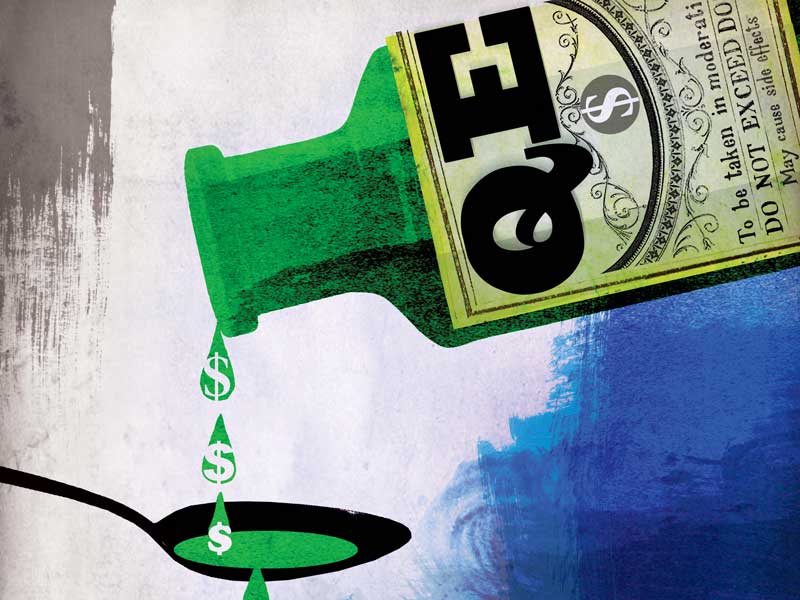If the US federal budget deficit ends up at approx. 20% of GDP, that would equate to approx. 4 trillion dollars for the Treasury to finance. Across recent few posts in this space, I have attempted to make sense of it and categorise Janet Yellen’s options to that extent. To be sure, she is in the process of tapping into the commercial banks as takers, and for that purpose, she didn’t mind pushing the long end up to the 1.50s% level to enable a proper carry trade for them.
That is all nice and good and will probably work, but having thought about it more, the banks already burdened their balance sheets with close to 4 trillion of government bonds. It is like a risk-free profit proposition for them, but in the end, there is a finite amount of additional paper they will be able to load up. Their total profitability would suffer, there would be not much further room for their bread-and-butter corporate business, and they would finally morph into policy bank status as I indicated the other day.
What do we think the banks will be able to relieve Yellen of…? A couple of hundred billion this year maybe? Sure, that’s easily possible and will help long rates to be contained at current levels, but it will not make much of a difference in her book. The rest of the domestic market will chime in some again, particularly if the bond scare dissipates again. Foreigners, however, have stayed away from the market, fearing dollar instability down the road.
So, where is Yellen going to get the money from? Well, there is only one answer to that question, and it is her ex-colleague Jay Powell. Eventually, the Fed will have to do the heavy lifting. But if that is Powell’s fate as chair, then why would he have any interest in hinting at a tapering exercise anywhere near down the road. He doesn’t, as if he did or wanted to or even felt that fundamentals called for it, he would burden the US Treasury with marked increases in interest cost and make Yellen life even harder.
In other words, there isn’t much deep thinking required on the Fed governors’ end. The choice is obvious. The Fed will have to do everything it takes (sounds like Draghi, doesn’t it 😉 ) to keep rates and the curve depressed, or risk for the system to ultimately spin out of control. Not to worry, though… Powell is hard at work as we speak. After he injected 3 trillion when the pandemic broke in Q2 last year and drove the Fed balance sheet to 7 trillion, its size has since stealthily increased to 7.6 trillion.
The uptrend is beginning to accelerate again. Once all is said and one for 2021, I wouldn’t be surprised if the Fed carried a double-digit trillion numbers on its shoulders. Is that a hazardous play? Of course, but how much of that have we already witnessed…? And one can never say when the game of musical chairs will, in fact, stop. The fat lady is a long way from singing. Look at Japan and its decades of monetary moral hazard. It could be years or even decades until we finally reach the point of reckoning.
Meanwhile, excess liquidity will be aplenty which is good news for risk assets and the stock market. Let’s just hope that a technical correction puts a dent into equity prices one of these days, which is close to a certainty, so we can employ cash and buy more. The key to watch will be the dollar. While it seems to enjoy a little renaissance currently, the greenback will probably be the best indicator of when enough is enough and a sea change of sorts will be imminent.
